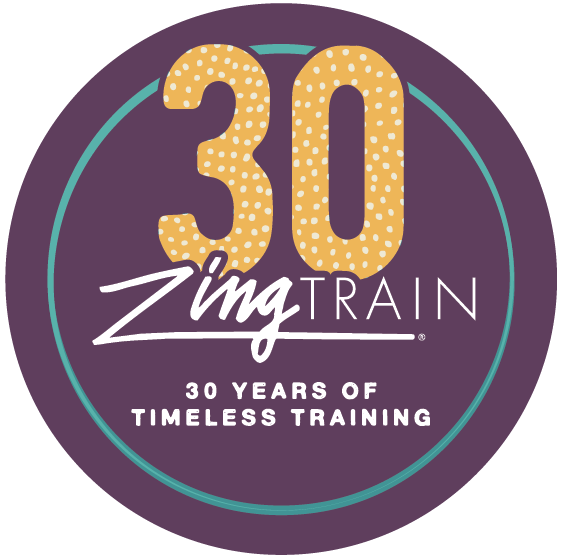MORE Low-Cost Service Tips
Great service is about getting the big and small things right—and in this tough economy, keeping customers happy has even greater significance. Therefore, here is the second installment of basic but useful service strategies that we put into practice at Zingerman’s. Some of these can be implemented one at a time, starting tomorrow morning if you’re feeling inspired. Some may seem obvious and some I’ve talked about before in past columns. But as we strive to be our best, it’s important to make sure we are keeping service standards high. And best of all, these strategies cost next to nothing to execute other than some time and a fair bit of stubbornness to make sure they get implemented.
1. Start a Little Early, Close a Little Late
This is a small but I think hugely helpful system I learned many years ago. Quite simply, we unlock our doors—and begin answering incoming phone calls—five minutes prior to our advertised opening hours. And we don’t lock the doors or leave the phones behind until five minutes after our formal closing hours.
Why? The most basic reason is that the time on our clocks may differ from our customers’ watches. Sure, our clock might say 6:58 a.m. inside the store, but if the guest waiting outside in the cold thinks it is 7:01 a.m., then in her mind we are running late. We are sending a message—unintentional and incorrect though it may be—that we aren’t on top of what we’re doing.
The same sort of thing holds true at the end of the day—the “:55/:05 Rule” as we call it, helps us give great service to those customers who barely missed the cutoff of our formal closing time. We’ve all been there—racing across town at the last minute, catching too many red lights, finally getting to the store only to find that they’d just closed. How nice would it be to discover instead that the store was willing to cut us a break because they appreciate our business?
2. Be Welcoming on the Phone
As silly as it sounds, as you pick up the phone, envision yourself “opening the door” for a guest who’s about to “walk in” to the business. This visualization can help to put a positive, unhurried tone in your voice. We’ve found that this exercise helps us stay away from the natural tendency to sound harried when it’s busy. No one would say to a customer walking in the front door, “Hurry up and get in here.” But we’ve all slipped at times when we’re answering the phone and we need to take the time to welcome the caller into our business.
The next step in being a welcoming host takes place when directing phone customers to the right person to help them. If they’ve called the wrong number (let’s say the Bakehouse rather than the Roadhouse), rather than just giving them the number of the “right” business, we offer to have someone from the “right” location call them. Of course, I know that at times the guests may prefer to call the correct number themselves, which is fine. But it seems far more customer friendly for us to take the burden on ourselves first and offer to call for them.
Another way to be a welcoming telephone host involves the correct way to transfer a call. Rather than simply saying, “Let me transfer you,” which can send customers into a black hole of service uncertainty, be specific and tell them something like, “Let me get Cathy in Catering to help you out with that.” It sounds much more personal and is far less off putting. Also be sure to give them “Cathy’s” direct line in case they get disconnected. It is additionally helpful to tell the other staffer what the customer wants so they don’t have to repeat themselves.
3. Amp up the Enthusiasm
While “being enthusiastic” is a service staple, we are specific about our goals on communicating enthusiasm to staff and to our customers. We tell staff that: “We want each guest we interact with to leave that interaction feeling like he was the best thing to happen to us that day.” And that’s not just hype. We teach staff that, although we know this isn’t always easy to do, we’re all committed to doing it nevertheless. What that kind of interaction looks like is something we address in training classes, in on-the-spot performance feedback and in written reviews.
4. Learn to Handle Difficult Questions
Nothing is more frustrating for customers than not being able to get the right information, and we train staff on how to deal with the inevitable—not being able to answer a question. We say that when a customer asks them something they don’t know, please respond with something like, “Hey, that’s a great question. Let me find out the answer and I’ll get right back to you.” (If the guest is on the phone, we ask if she’d prefer to hold or to have us call her back and/or email her.) Handling things in this way means that we help our customers feel respected for asking a good question, and the staffer can feel calm and confident when they get hit with queries about products and services with which they’re not up to speed.
Having said that, if the staffer finds himself unable to answer a second question in the same conversation, he should get someone else to take over the guest. We don’t want the poor customer to have to repeatedly be kept waiting while we find out what she wants to know. There are certainly exceptions, but in general it’s an effective guideline. We tell staff that the first time you don’t know the answer, go find out and get back to the guest. The second time, offer to bring to the guest someone more knowledgeable. This might involve letting a manager take over the interaction or just join the conversation. And, taking this technique to the top of its effectiveness, we recommend that the original service provider—who didn’t know the answer but did know enough to get help—stand close by so he can learn at the same time the customer does. In the future, he’ll be ready to serve with more accurate information on his own.
5. Get in Gear When You’re Wearing the Gear
When we are wearing the company logo—shirts, hats, jackets, etc.—it’s important to remember that customers are going to assume that we’re representing the organization whether we are on the clock or not. If we’re out and about and “in uniform,” we need to be mindful that customers will be judging the entire organization based on the way we behave and, well, behave accordingly.
The same respect and responsible attitude also applies when driving company vehicles. We know that many people may choose to drive over the speed limit in their private lives, but it’s not so great to be doing it while you’re driving a car or truck that has a company logo all over it. All those service rules about being courteous in the store also apply to when we are behind the wheel.
I hope you’ve found these ideas helpful. In the next issue, I’ll share the final installment of low-cost service tips. In the meantime, I’m sure there are many simple but meaningful techniques that you’ve used successfully in your organization, and I’d love to hear about them. Feel free to send them my way at ari at zingermans dot com.
 Back to Library
Back to Library





